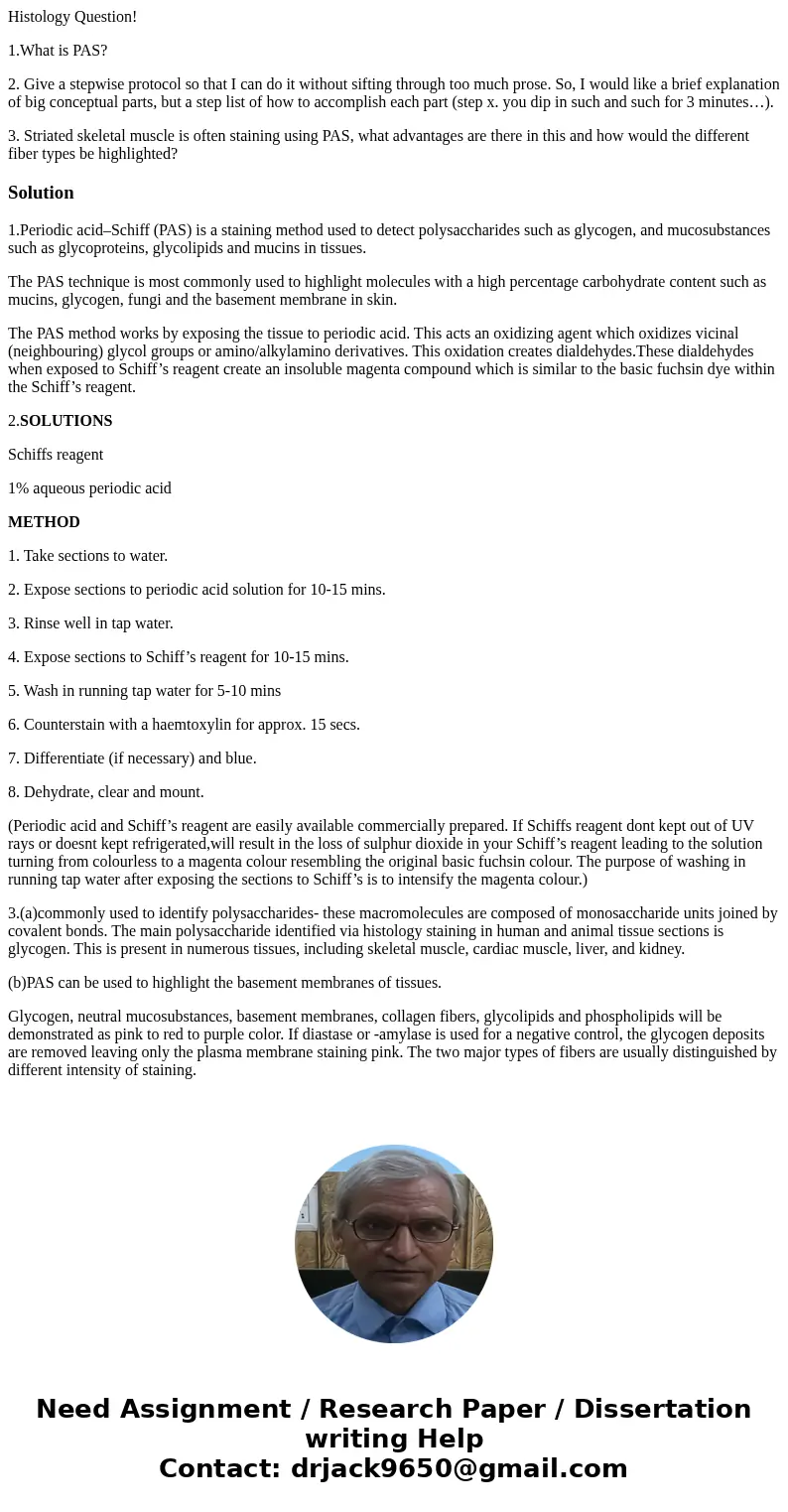Histology Question 1What is PAS 2 Give a stepwise protocol s
Histology Question!
1.What is PAS?
2. Give a stepwise protocol so that I can do it without sifting through too much prose. So, I would like a brief explanation of big conceptual parts, but a step list of how to accomplish each part (step x. you dip in such and such for 3 minutes…).
3. Striated skeletal muscle is often staining using PAS, what advantages are there in this and how would the different fiber types be highlighted?
Solution
1.Periodic acid–Schiff (PAS) is a staining method used to detect polysaccharides such as glycogen, and mucosubstances such as glycoproteins, glycolipids and mucins in tissues.
The PAS technique is most commonly used to highlight molecules with a high percentage carbohydrate content such as mucins, glycogen, fungi and the basement membrane in skin.
The PAS method works by exposing the tissue to periodic acid. This acts an oxidizing agent which oxidizes vicinal (neighbouring) glycol groups or amino/alkylamino derivatives. This oxidation creates dialdehydes.These dialdehydes when exposed to Schiff’s reagent create an insoluble magenta compound which is similar to the basic fuchsin dye within the Schiff’s reagent.
2.SOLUTIONS
Schiffs reagent
1% aqueous periodic acid
METHOD
1. Take sections to water.
2. Expose sections to periodic acid solution for 10-15 mins.
3. Rinse well in tap water.
4. Expose sections to Schiff’s reagent for 10-15 mins.
5. Wash in running tap water for 5-10 mins
6. Counterstain with a haemtoxylin for approx. 15 secs.
7. Differentiate (if necessary) and blue.
8. Dehydrate, clear and mount.
(Periodic acid and Schiff’s reagent are easily available commercially prepared. If Schiffs reagent dont kept out of UV rays or doesnt kept refrigerated,will result in the loss of sulphur dioxide in your Schiff’s reagent leading to the solution turning from colourless to a magenta colour resembling the original basic fuchsin colour. The purpose of washing in running tap water after exposing the sections to Schiff’s is to intensify the magenta colour.)
3.(a)commonly used to identify polysaccharides- these macromolecules are composed of monosaccharide units joined by covalent bonds. The main polysaccharide identified via histology staining in human and animal tissue sections is glycogen. This is present in numerous tissues, including skeletal muscle, cardiac muscle, liver, and kidney.
(b)PAS can be used to highlight the basement membranes of tissues.
Glycogen, neutral mucosubstances, basement membranes, collagen fibers, glycolipids and phospholipids will be demonstrated as pink to red to purple color. If diastase or -amylase is used for a negative control, the glycogen deposits are removed leaving only the plasma membrane staining pink. The two major types of fibers are usually distinguished by different intensity of staining.

 Homework Sourse
Homework Sourse